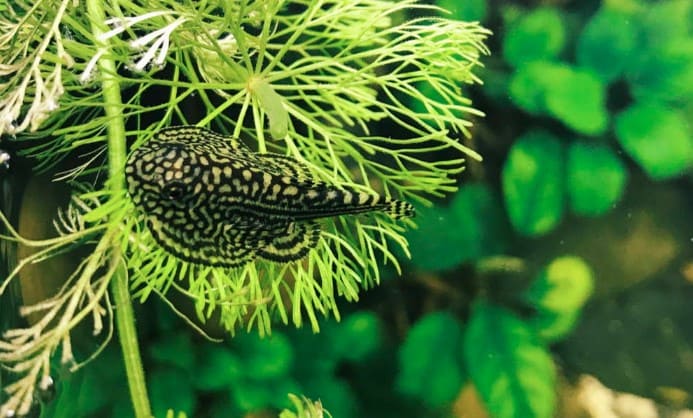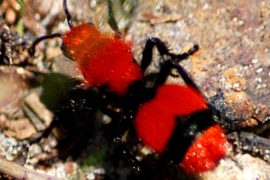The simplest, most effective, and most sustainable way to prevent algae growth in the aquarium is lush planting with balanced water values and suitable lighting. But is it always enough to rely on it? Not in every case. Most aquarium owners prefer to play it safe and choose the right stock when setting up a new tank: Algae are on the menu for many species. We introduce you to some of the most popular algae eaters.
Choosing the best algae eaters for the aquarium
If the water values in the aquarium get out of balance or if the lighting conditions change, algae can quickly develop in the aquarium. It is therefore advisable to plan to stock for the aquarium, which – at least partially – feeds on the unloved algae. Should an imbalance occur, the algae eaters in the aquarium will help to prevent an algae plague from arising in the first place?
As a short-term solution, the use of algae eaters is more suitable for owners who have several tanks. Caution also applies to beginners in aquaristics: Unfortunately, algae-eating fish are often advertised in the trade, which prove to be difficult to keep permanently. Reasons can be:
- the animals are good algae eaters as young fish, but quickly become too large
- Algae are only eaten by young fish, older ones lose interest
- the fish make special demands on keeping
- there is difficulty in feeding the animals once the algae are gone
So make sure you only keep algae-eating fish, shrimp, and snails in the aquarium whose requirements really match the environment you can offer them.
The most popular snails against algae
Nerite (Neritidae)
Nerite snails, the so-called entities, are regarded as algae eaters among snails and are unbeatable “algae eating machines”.
Their squat houses are plain anthracite or interestingly patterned and offer an interesting sight in the aquarium. The snail species is also so popular because it does not reproduce in the aquarium. Mass reproduction of the snail is therefore not to be feared even if there is an oversupply of food. Because this snail is so popular against algae, it is often sold under the name algae nerite. Keeping this snail species is easy. In the community tank, it is undemanding.
Ramshorn snails
Some aquarists have mixed feelings about ramshorn snails. They are considered good algae eaters and remove dead plant parts and other organic material.
The representatives of the genus Planorbarius are primarily distributed in aquariums. Living parts of plants are scorned as long as other food is available. While they make a useful contribution to the aquarium by fighting algae and using food leftovers, they can also become a nuisance due to their willingness to reproduce when there is sufficient food available. A healthy balance needs to be found here. There are now many different color variants, which are bred by a large community of snail lovers. In relevant forums, you can often get different color forms against reimbursement of the shipping costs.
The most popular fish against algae
Siamese Algae Eater (Crossocheilus siamensis)
The Siamese Algae Eater is a popular fish against algae in the aquarium. According to specialist literature, it should not only eat thread algae but also brush and even beard algae. However, experience does not always confirm this. Some keepers also report that hungry Siamese algae eaters may attack the aquarium plants. So make sure you have a balanced diet. The Alchemist is not choosy: it willingly accepts frozen and dry food as well as vegetable food.
Because the Algae Eater is a popular fish against algae, it is often advertised as an “algae eater” – and unfortunately sold to owners with tanks that are too small. Note that this species of fish reaches a size of up to 15 centimeters. In the aquarium, they are best kept in groups. The animals often form territories, which is why they should be kept in spacious tanks.
Ear lattice catfish (Otocinclus affinis)
A good helper against algae is the latticed armored catfish. It feels well kept in groups in larger, current-rich aquariums. The sensitive fish should only be socialized with quiet aquarium inhabitants. With its sucking mouth it mainly eats algae coverings, e.g. B. green algae and diatoms form. He despises hard types of algae such as brush algae or beard algae. He is a popular resident in the shrimp tank because he does not prey on the offspring. Feed the Otocinclus enough with additional food. B. catfish tablets, zucchini slices, and other vegetables if there are not enough algae in the aquarium. It should always have a rounded tummy, then the algae-eating fish is well fed.
Reddish sucker mullet (Garra rufa) also known as “nibble fish”.
Garra rufa is an excellent algae eater. Aquascapers like to use them after the setup to keep algae growth under control from the start. With a maximum size of 14 cm (but often only around 10 cm in the aquarium), the adult reddish sea mullet needs an aquarium at least 100 cm long. In addition, they should be kept in small groups of 4-6 animals. Anyone who can offer these conditions will have a lot of fun with the frugal and lively little fish.
Smaller aquarium owners will need to consider what to do with the animals once they get bigger and have done their job as algae eaters. Talk to your pet store. Many also take back healthy, well-fed Garra because they like to use them as cleaners in their own aquariums or in plants. But you shouldn’t necessarily expect something in return. But you can do without that for the benefit of the animals.
The most popular shrimp against algae
Amano shrimp
The Amano shrimp is the most tireless algae eater among the dwarf shrimp. It is able to consume large amounts of green algae in a short time. She feels particularly comfortable in larger groups. For example, if a number of Amano shrimp attack a bunch of thread algae, it can be gone within a short time.
If the water parameters are correct, the Amano shrimp is an excellent aquarium dweller against algae. It is easy to care for, keeps the tank clean by consuming leftover food, and has no special feeding requirements. Since they only pollute the water a little with their excretions compared to fish and snails, they are ideally suited as algae eaters in the aquarium. Smaller shrimp species also contribute to the ongoing decimation of the algae population but are significantly less effective. However, with their bright colors, they offer a particularly pretty sight. These mainly include Caridina and Neocaridina species such as
- Redfire
- Crystal Red / Bee Shrimp
- bumblebee shrimp
- sakura
- and much more m.
Whichever algae eater you decide to have in the aquarium: choose a species that you are genuinely interested in: after all, the animal will continue to live in your tank even after the algae have been eliminated. We hope you enjoy it and keep your fingers crossed for an algae-free aquarium.
Read more: You can find more information about algae in the aquarium in our detailed post. There you will learn, among other things, how algae develop, how to inhibit or avoid growth, and which types of algae can settle in the aquarium.
What do you think are the absolute TOP favorites among the algae eaters? What is your experience? We look forward to your suggestions and comments!





